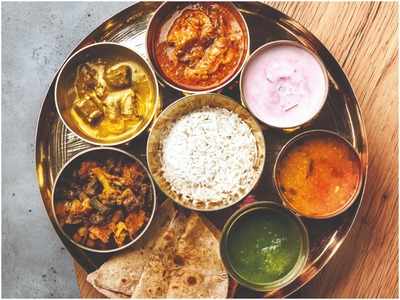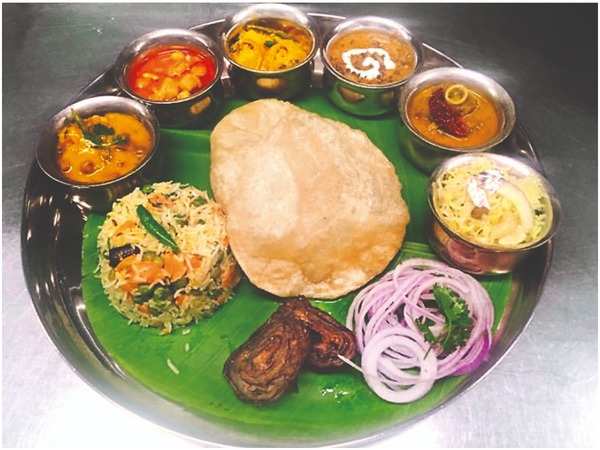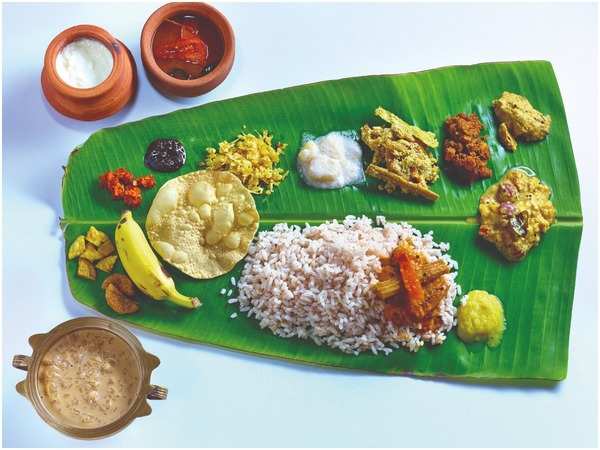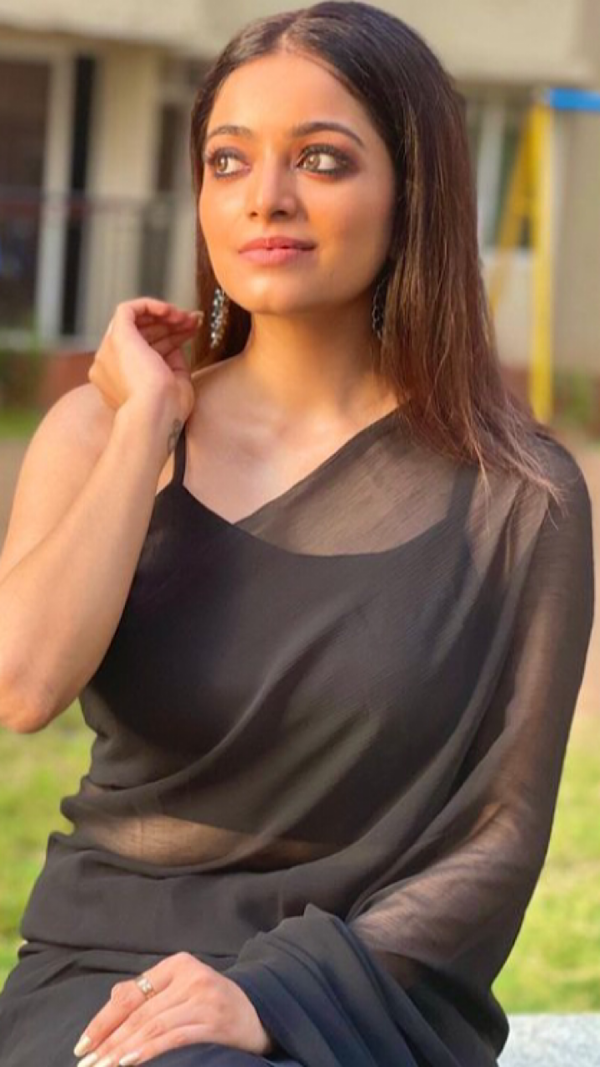Trending
This story is from November 6, 2020
The big Indian thali: When stories meet flavour on a platter
The sit-down meal takes a person on a ‘cultural exploration’ and showcases cooking techniques, spices of a place.

An Indian thali is a cultural exploration of tastes, sights, sounds and memories
There’s nothing that quite conveys an explosion of flavours like an Indian thali. The sit-down meal offers a distinct taste of everything — right from the appetisers to the main course, accompanying drinks and sweetmeats. The thali, it is said, takes a person on a ‘cultural exploration’ and showcases cooking techniques and spices of a place. It also beautifully encompasses the geography of a place.
‘A thali is a representation of food memories’
This multi-dish meal isn’t just about the food — each thali has its own story to narrate as it embraces the regional sights, sounds and tastes of the place it originates from.Kalyan Karmakar, food expert, describes the thali as “a representation of food memories”. He explains, “A homemade thali would have different aspects of a person’s life captured in it. For example, as a Bengali who has lived in Mumbai for the last 20 years, my thali would be an amalgamation of Maharashtrian and Bengali dishes. For instance, recently the thali at home had jowar-bhakri, tendli cooked with coconut and peanuts from Maharashtra, as well as a Bengali chholar dal. It was a representation of who I am, my food memories and culinary adventures. I would like to think that this would be typical of any thali.” He adds, “Besides, each state has their own versions and within the state too, you will find huge variances. What a thali does is capture the fact that an Indian meal at heart, is all about contrast of flavours and an accumulation of different components — it includes proteins, grains, legumes and vegetables. It is similar to the Japanese kaiseki meal in philosophy — both are anchored on seasonal and local produce; it is also a balance of courses.”
THALI-HO!
Gujarati thali

One of the most popular varieties is the Gujarati thali. Says Shital Kakad, “A Gujarati thali has so much tradition and also differs with every season. It lays emphasis on three tastes which are sweet, sour and spicy. It mostly uses seasonal vegetables and the flavours vary in different parts of Gujarat. You will find dishes in it such as Surti dal, batata nu shak, vaal, papdi, dhokla, kadhi, kachumber, samhabro and basundi, gol papdi or puran poli. The thalis vary with the season — in summer, you will get a Gujarati aam ras puri and in winter, the undhiyu-shrikhand puri one. Lastly, it’s a misconception that all Gujarati thalis are sweet.”
Punjabi thali

A hearty fare, Punjabi thali is full of robust tastes. Talking about what goes into them, food expert Reetu Uday Kugaji says, “The Punjabi thali has a generous dose of unsalted home-made white butter. It also has dishes like tandoori roti, naan and Amritsari-stuffed kulchas. You will also get stuffed parathas, not to forget the pindi chole, paneer tikka, paneer makhani, dal makhani or maa di dal, with its smooth, velvety texture. The thali would have a pakodewali kadhi, which are onion and fenugreek dumplings in a spicy yogurt sauce and aloo gobi matar di sabzi, boondi raita and dahi vada. A must-have in a winter thali is the sarson da saag te makki di roti. A non-veg fare includes Amritsari machchi, tandoori chicken or butter chicken.” Making a mention of the pickles and sweets, she adds, “A cauliflower-carrot-turnip pickle or pachranga aachar and pudine te hare dhaniye di chutney is served with jeera rice and matar pulao. The sweet comes in the form of gajar ka halwa, aka gajrela. Lassi flavoured with green cardamom powder, topped with fresh cream and garnished with pistachio nuts and almonds, served in a kangni-wala glass.”
Pathare Prabhu thali

A typical Pathare Prabhu thali is known to be seafood-based. Says Sunetra Sil Vijaykar, “The centrestage is almost always taken by a large-sized fish such as a full chutney pomfret, rava-fried surmai fillets or a crab dish like Chimbori che khadkhadle. There are also usually three curry items — gode mutton, bombil and prawn kalwan. There is also the vegetarian dish, ananas sambharye, a stew made with pineapple, cashews and coconut milk to balance the palate.” She adds, “Desserts have a special place as well. Pathare Prabhu sweets like roth (semolina cake) or doodhi halwa (bottle gourd pudding), accompanied by chapati or bhakri and steamed rice.”
Kolhapuri thali

A Kolhapuri thali has a mix of spice and aroma. Food expert Anurima Athalye explains, “The traditional Kolhapuri kanda-lasoon masala is used extensively in making vegetarian and non-vegetarian dishes. We also use Byadgi chilli that gives each curry the vibrant red colour and the Kolhapuri zhatka (heat). The mutton or chicken rassa in the thali has fluid and is heavy on spices. There is a sukka mutton or chicken prepared in the kala masala by charring onion and dried coconut on direct flame. The tambda rassa is made with meat stock and spices and pandhra rassa is a blend of masala paste, mutton/chicken stock and coconut milk. It also has koshimbir, rice dish and kande baat, which is had with tel-poli (chapati) or jowar bhakri.”
Bengali thali

Among all the grand Indian thalis is the comforting Bengali thali, which needn’t always be non-vegetarian, says foodie Purabi Naha. Talking about the niramish (vegetarian) thali, she elaborates, “The Bengali thali is a perfect example of balance of flavours, where we start with the bitter note and end with a sweet one. This thali has steamed Basmati rice, surrounded by alur torkari (a potato-based dish) and kumro bhaja (sweet pumpkin fry). You also have cow ghee, mushuri dal (red lentil soup), thorer ghonto (a banana-stem delicacy), chanar dalna (a curry of homemade paneer roundels and potato cubes), badhakopir muri ghonto (fish heads cooked with cabbage and potatoes), shojne-dnaataar jhol (drumsticks in a light broth), tomator chatni, doi (curd), rosogolla and mishti paan (betel leaves with sweet fillings). This thali is proof that Bengali thali can be much beyond shorshe maach and kosha mangsho.”
Himachali thali

Himachal Pradesh offers a traditional thali feast called dham and each of the 12 districts has its own versions of it. Says home chef Sherry Mehta, “The preparation for this elaborate luncheon begins the night before. Special masalas are used to prepare the meals that are used in copper utensils. Most of the recipes, especially madra, are prepared in pure ghee and dry fruits are added for more taste. No dham is complete unless it has madra, mahni and khatta. The chefs avoid use of onion and garlic in a dham and instead use curd and amchur (dried mango powder), which help in enhancing the flavour. The other reason being easy availability of the dairy products in the state. The dishes are served with steaming hot rice.”
Kerala thali

The state of Kerala boasts of a variety of vegetarian, non-vegetarian and seafood cuisines. A staple across the dishes is coconut oil, which imparts a distinct taste to the cuisine. Says food expert Vinaya Prabhu, “The most popular thali is the vegetarian one that is traditionally served on festivals like Onam and Vishu. Called sadhya, it has dishes like nendran (raw banana wafers), parippu (Kerala-style dal), vendakka mezhukupuratti (okra fry), kootu curry (chickpeas), olan (coconut milk-based mixed vegetable dish), French beans thoran, rasam, the sweet-sour inji puli pickle and more. Sweets would be pazham pradhaman with rice, dry fruit, coconut and jaggery.”
‘A thali is a representation of food memories’
This multi-dish meal isn’t just about the food — each thali has its own story to narrate as it embraces the regional sights, sounds and tastes of the place it originates from.Kalyan Karmakar, food expert, describes the thali as “a representation of food memories”. He explains, “A homemade thali would have different aspects of a person’s life captured in it. For example, as a Bengali who has lived in Mumbai for the last 20 years, my thali would be an amalgamation of Maharashtrian and Bengali dishes. For instance, recently the thali at home had jowar-bhakri, tendli cooked with coconut and peanuts from Maharashtra, as well as a Bengali chholar dal. It was a representation of who I am, my food memories and culinary adventures. I would like to think that this would be typical of any thali.” He adds, “Besides, each state has their own versions and within the state too, you will find huge variances. What a thali does is capture the fact that an Indian meal at heart, is all about contrast of flavours and an accumulation of different components — it includes proteins, grains, legumes and vegetables. It is similar to the Japanese kaiseki meal in philosophy — both are anchored on seasonal and local produce; it is also a balance of courses.”
THALI-HO!
Foodies give insights into the diverse thalis and what goes into them...
Gujarati thali

<p>Gujarati thali mostly uses seasonal vegetables<br></p>
One of the most popular varieties is the Gujarati thali. Says Shital Kakad, “A Gujarati thali has so much tradition and also differs with every season. It lays emphasis on three tastes which are sweet, sour and spicy. It mostly uses seasonal vegetables and the flavours vary in different parts of Gujarat. You will find dishes in it such as Surti dal, batata nu shak, vaal, papdi, dhokla, kadhi, kachumber, samhabro and basundi, gol papdi or puran poli. The thalis vary with the season — in summer, you will get a Gujarati aam ras puri and in winter, the undhiyu-shrikhand puri one. Lastly, it’s a misconception that all Gujarati thalis are sweet.”
Punjabi thali

Sarson da saag is a must in a Punjabi thali
A hearty fare, Punjabi thali is full of robust tastes. Talking about what goes into them, food expert Reetu Uday Kugaji says, “The Punjabi thali has a generous dose of unsalted home-made white butter. It also has dishes like tandoori roti, naan and Amritsari-stuffed kulchas. You will also get stuffed parathas, not to forget the pindi chole, paneer tikka, paneer makhani, dal makhani or maa di dal, with its smooth, velvety texture. The thali would have a pakodewali kadhi, which are onion and fenugreek dumplings in a spicy yogurt sauce and aloo gobi matar di sabzi, boondi raita and dahi vada. A must-have in a winter thali is the sarson da saag te makki di roti. A non-veg fare includes Amritsari machchi, tandoori chicken or butter chicken.” Making a mention of the pickles and sweets, she adds, “A cauliflower-carrot-turnip pickle or pachranga aachar and pudine te hare dhaniye di chutney is served with jeera rice and matar pulao. The sweet comes in the form of gajar ka halwa, aka gajrela. Lassi flavoured with green cardamom powder, topped with fresh cream and garnished with pistachio nuts and almonds, served in a kangni-wala glass.”
Pathare Prabhu thali

Chimboriche khadkhadle takes centrestage in this thali
A typical Pathare Prabhu thali is known to be seafood-based. Says Sunetra Sil Vijaykar, “The centrestage is almost always taken by a large-sized fish such as a full chutney pomfret, rava-fried surmai fillets or a crab dish like Chimbori che khadkhadle. There are also usually three curry items — gode mutton, bombil and prawn kalwan. There is also the vegetarian dish, ananas sambharye, a stew made with pineapple, cashews and coconut milk to balance the palate.” She adds, “Desserts have a special place as well. Pathare Prabhu sweets like roth (semolina cake) or doodhi halwa (bottle gourd pudding), accompanied by chapati or bhakri and steamed rice.”
Kolhapuri thali

Mutton-rassa is a must-have on the Kolhapuri thali
A Kolhapuri thali has a mix of spice and aroma. Food expert Anurima Athalye explains, “The traditional Kolhapuri kanda-lasoon masala is used extensively in making vegetarian and non-vegetarian dishes. We also use Byadgi chilli that gives each curry the vibrant red colour and the Kolhapuri zhatka (heat). The mutton or chicken rassa in the thali has fluid and is heavy on spices. There is a sukka mutton or chicken prepared in the kala masala by charring onion and dried coconut on direct flame. The tambda rassa is made with meat stock and spices and pandhra rassa is a blend of masala paste, mutton/chicken stock and coconut milk. It also has koshimbir, rice dish and kande baat, which is had with tel-poli (chapati) or jowar bhakri.”
Bengali thali

The niramish thali
Among all the grand Indian thalis is the comforting Bengali thali, which needn’t always be non-vegetarian, says foodie Purabi Naha. Talking about the niramish (vegetarian) thali, she elaborates, “The Bengali thali is a perfect example of balance of flavours, where we start with the bitter note and end with a sweet one. This thali has steamed Basmati rice, surrounded by alur torkari (a potato-based dish) and kumro bhaja (sweet pumpkin fry). You also have cow ghee, mushuri dal (red lentil soup), thorer ghonto (a banana-stem delicacy), chanar dalna (a curry of homemade paneer roundels and potato cubes), badhakopir muri ghonto (fish heads cooked with cabbage and potatoes), shojne-dnaataar jhol (drumsticks in a light broth), tomator chatni, doi (curd), rosogolla and mishti paan (betel leaves with sweet fillings). This thali is proof that Bengali thali can be much beyond shorshe maach and kosha mangsho.”
Himachali thali

The dham thali fare
Himachal Pradesh offers a traditional thali feast called dham and each of the 12 districts has its own versions of it. Says home chef Sherry Mehta, “The preparation for this elaborate luncheon begins the night before. Special masalas are used to prepare the meals that are used in copper utensils. Most of the recipes, especially madra, are prepared in pure ghee and dry fruits are added for more taste. No dham is complete unless it has madra, mahni and khatta. The chefs avoid use of onion and garlic in a dham and instead use curd and amchur (dried mango powder), which help in enhancing the flavour. The other reason being easy availability of the dairy products in the state. The dishes are served with steaming hot rice.”
Kerala thali

The sadhya is usually vegetarian fare
The state of Kerala boasts of a variety of vegetarian, non-vegetarian and seafood cuisines. A staple across the dishes is coconut oil, which imparts a distinct taste to the cuisine. Says food expert Vinaya Prabhu, “The most popular thali is the vegetarian one that is traditionally served on festivals like Onam and Vishu. Called sadhya, it has dishes like nendran (raw banana wafers), parippu (Kerala-style dal), vendakka mezhukupuratti (okra fry), kootu curry (chickpeas), olan (coconut milk-based mixed vegetable dish), French beans thoran, rasam, the sweet-sour inji puli pickle and more. Sweets would be pazham pradhaman with rice, dry fruit, coconut and jaggery.”
End of Article
FOLLOW US ON SOCIAL MEDIA








